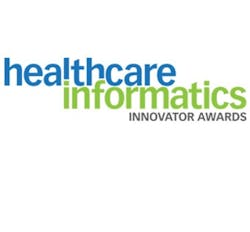As healthcare providers across the country seek to transition from fee-for-service to value-based care delivery and payment, many are trying to tackle the complexities involved in transforming from the traditional siloed care model into a network care model, which enables increased care coordination and effective population health management, both of which are foundational to value-based care. The majority of healthcare providers undertaking this work are facing monumental challenges related to combining clinical data from multiple health information systems with paid claims data, analyzing the data and then delivering actionable information back to clinicians at the point of care. It’s a capability that few provider organizations, thus far, have achieved, which makes the Cincinnati-based Mercy Health’s groundbreaking work in this area all the more impressive.
Clinical and IT executive leaders at Mercy Health are now successfully integrating population health analytics into the clinical workflow as part of an overall effort to achieve meaningful population health management. For their trailblazing work, the editors of Healthcare Informatics have named the Mercy Health team the co-second-place winning team in our Innovator Awards Program this year.
Essentially, this population health informatics project has been the result of a strategy to combine the technological capabilities of Mercy Health’s enterprise Epic electronic health record (EHR) and IBM Watson Health Explorys’s analytics platform, along with a generous amount of good old-fashioned elbow grease by the Mercy Health project team.
Mercy Health, the largest health system in Ohio and one of the largest health systems in the United States, operates about 450 health facilities, including 23 hospitals, eight senior living communities, five hospice programs and seven home health agencies in Ohio and Kentucky. J.D. Whitlock, vice president of enterprise intelligence, says the health system started its population health journey in 2011 when it’s clinically integrated network, Mercy Health Select, was selected to participate in the Centers for Medicare & Medicaid Services’ (CMS) Medicare Shared Savings Program (MSSP) accountable care organization (ACO) model. According to Mercy Health executive leaders, Mercy Health Select generated more than $15 million in savings in 2014. Today, Mercy Health’s value-based contracting programs include the MSSP ACO, which now covers close to 70,000 beneficiaries, as well as four Medicare Advantage programs and the employee health plan, for a total of 130,000 lives covered.
Rebecca Sykes
Essentially, as the result of the project team’s work to integrate its Epic EHR and Watson Health analytics, project leaders are using paid claims and clinical data to define populations, generate advanced risk scores and integrate them back into the Epic workflow. As a result, ambulatory care coordinators and primary care providers are able to leverage advanced and prospective risk scores within the EHR workflow, which significantly facilitates the work of identifying high-risk patients and improving care coordination.
An Evolving Technology Strategy
Whitlock credits the health system’s executive leadership, in particular CIO Becky Sykes, with making key, forward-leaning decisions back when Mercy Health began its ACO work that has helped to propel its population health management informatics work forward. As the executive sponsor for this project, Sykes drove the vision and execution of Mercy’s large single-instance Epic deployment with collaborative build and clinician-led optimization. Of the 650 primary care providers that participate in the Mercy Health Select MSSP ACO, 96 percent are on the health system’s single-instance of Epic, including both employed primary care providers as well as affiliate PCPs. “That makes all the difference in the world to be able to do these things efficiently,” Whitlock says.
Recognizing the need for a population health platform, Mercy Health also partnered with Cleveland-based Explorys back in 2011 to implement its population health strategy. [IBM acquired Explorys in 2015 and it is now a part of IBM’s Watson Health unit.] “When we kicked off our ACO work, back at the end of 2011, [Sykes] recognized some of [Explorys/Watson Health’s] capabilities very early. She also had resourced this work, so that everyone on the team had time to work on this project, understanding that it’s complex and it takes longer than you think it will,” Whitlock says.
JD Whitlock
According to Mark Binstock, M.D., associate medical information officer at Mercy Health, two years ago, when the health system really pushed forward into population health management, the capability to integrate paid claims data and clinical data was not a strength or functionality of the Epic platform. And so, Mercy Health physician and IT leaders saw an opportunity to leverage the strengths of Epic’s Healthy Planet platform—workflow integration, clinical decision support, the patient portal and patient outreach—with the strengths of Watson Health, namely, data aggregation from multiple EHRs and paid claims from multiple payers, as well as advanced risk scores and machine learning.
The project team was comprised of IT and clinical leaders, including Sykes, as the executive sponsor, Whitlock, as the solutions architect for the project, Binstock, Aaron Thomas, CarePATH team lead, population health, and Gary Grazak, population health IT senior director.
Binstock served as the clinical subject matter expert on the project team, and as Whitlock notes, “told us exactly what we need to build so that a doctor will use it.”
“As hard as the technical challenges were with this project, and they were hard and took a lot of effort, the cultural element is even harder and is still an evolution,” Binstock notes. “For many doctors, the most customary practice that the y’re used to dealing with is a patient who is coming in with a complaint or problem and the doctor is addressing that problem at that visit. What we’re trying to do is change that to think of that visit as a vehicle for extending care for the patients’ entire health, the chronic conditions and the preventive services gaps. So that’s what we’re up against—how, at that point of care, to make that doctor aware of care gaps as its related to chronic conditions and the preventative services gap, such as a mammogram or pap smear, and make it easy to close those gaps.”
Mark Binstock, M.D.
He continues, “And the reality is, it’s actually very hard, perhaps impossible, to expect a doctor to not only take care of the problem at hand, but all these other gaps in care. So, therefore, we need additional tools that occur at other points in time when the patient is not physically present in the doctor’s office, where the care team, and extensions of population care, can assist in the identification and closure of those care gaps.”
Foundational to this initiative has been some very complex and challenging IT work that has involved the building of data and reporting structures inside the Epic application in order to present the end result to clinicians, as well as building a patient context-sensitive single sign-on solution that presents the Watson Health patient summary, including risk scores and care gaps calculated from multiple EHRs and paid claims data, within the Epic clinical workflow. Regarding the patient context-sensitive single sign-on solution, Thomas says, “Rather than asking the provider to jump out to a web browser to sign in external to the EHR, we’re imbedding a link within the patients’ plan of care, and that’s happening behind the scenes.”
To accomplish this, the project team worked collaboratively with IBM Explorys and Epic. “We had multiple calls between engineers from Explorys, engineers with Epic and engineers from our Mercy Health Epic team to make sure everything was talking as it needed to in order to do that patient context sensitive single sign on,” Binstock says.
Thomas adds, “From a technical perspective, it required extensive testing and also development on our side. It was the challenge of speaking two different languages, one on the technical side of Explorys and one within the ecosystem of Epic.”
The work also involved leveraging Watson Health advanced risk scores and building on those capabilities to develop three advanced risk scores—an overall utilization risk, a mortality risk score and a risk of emergency department visit utilization. “You need both paid claims data from the payers to give you the breadth of what’s going on with the patient where it’s not happening inside your EHR and then the low latency of what happens with your patient inside your health system that’s in your EHR," Binstock says. He notes that Mercy Health's development of utilization scores is not particularly unique, yet "the combination of paid claims and the EHR data together into this score, I don’t think a lot of people are doing that,” he says.
That resource utilization tool enables providers and care coordinators to “slice and dice the population into cohorts to assign different modalities of intervention to,” Binstock says.
Additionally, the Mercy Health project team wanted a mortality risk score to indicate when a patient is in need of hospice care rather than intensive care coordination. Binstock has been guiding the development of some of the Watson Health risk scores, as well as the decision support tools inside Epic that utilize these risk scores. For example, Binstock decided to base the mortality risk score on the Gagne Index, which calculates the risk of mortality in the upcoming 12 months for patients 65 years and older. “It enables triage and care coordination, in a slightly different way. For patients who have a high risk of death within the next 12 months, it shifts the focus of care coordination towards end-of-life care, potentially hospice care and palliative care, to make sure things like advanced directives are in order,” Binstock says.
The third score presents a patient‘s risk of ED visit utilization within the next 30 days. “Because those types of resources tend to be very expensive, tend to be episodic and tend to not lead to good continuity of care, we’re trying to use those scores to predict who will likely end up in the emergency room and provide interventions to mitigate that,” he says.
According to Thomas, the project leaders went one step further in their innovative work, to provide the end-users of the tools additional information about what the risk scores mean. “We determined that some folks don’t understand the full extent of what the value, the risk score, means. And that’s one example of the technical piece, the IT, and trying to converge that with the cultural piece. For them it’s, what does this mean? What does this represent to me? And, the IT piece is us trying to help facilitate that within the EHRs or whatever tool we’re looking at to provide that additional information and why it’s valuable to them,” he says.
Aaron Thomas
With that solution in place, Mercy Health Select primary care providers on Epic have population health clinical decision support baked into the EHR workflow, which provides a more complete picture of the patient. “It provides initial identification of all the patients, in a primary care providers’ panel, who should be considered for care coordination,” Whitlock says.
Next Steps and Ongoing Progress
Phase one of the project was to enable providers and care managers to see the risk scores and receive reports on patients with high risk scores in order to manage them effectively. Moving forward, the Mercy Health project team is working to create best-practice alerts to signal when a patient has a high mortality risk score. “We’re trying to bring this to the surface to alert providers and the care team that the patient has this unique calculated risk of death and they need to take that into consideration when planning other aspects of the patient’s healthcare. That’s a novel approach of displaying the information as a number but also urging providers to act on it,” Binstock says.
The population health management work that Mercy Health has accomplished, to date, strategically prepares the health system for the ongoing and accelerating movement toward value-based payment models, the executive leaders say.
“With the portion of the population that’s considered to be at-risk and the lining up of incentives, compensation and structures for the providers to do these tasks that are expected them, that is all rapidly changing, and we are giving the providers the right tools we think they will need to be successful in the newer markets,” Binstock says.
“Because this work is so difficult, it’s sometimes portrayed as having a foot in two different canoes—the fee-for-service world and the value-based care world. You’ve got your foot in the value-based care canoe so when the economics really change, you can hop into that canoe, and how you deal with the complexity of that is very challenging, “Whitlock says. “To give ourselves a little bit of credit, because we are a religious non-profit, we have stepped out into population health before it was a financially rewarding thing to do, and we decided to do that because better care coordination of the patients is the right thing to do for our patients.”
Thomas adds, “I give credit to the wisdom of our organization’s leadership for strategic timing. I think you can look back and see how we’ve evolved with doing things in different ways strategically as the systems mature and the technology matures.”






